Traces of war and division in the city
THE FURTHER north we raise our glances, the more we spot the tragic bruises inflicted by the Korean War. The city of Dongducheon, in this sense, is one of our deepest scars. Located in the northernmost area of South Korea, it was one of the regions most impacted by the war and its byproducts. For the city, especially, the aftereffects of war remain today, as up to 42% of the city’s area is still used as military zones[1]. The city has ultimately attained a military culture, a decidedly unique characteristic not present in other Korean cities. On a wintry day where spring was far yet to come, I hastened myself to take the metro that would usher me into the city.
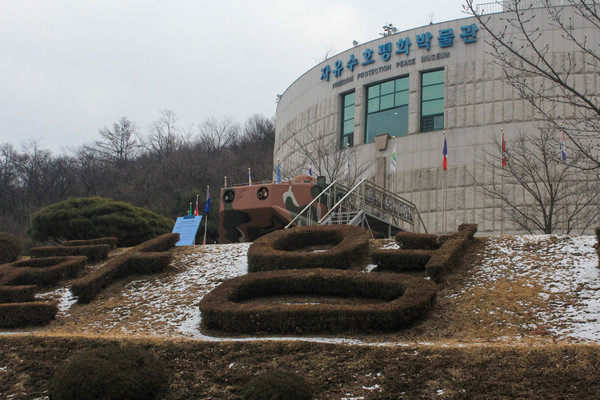
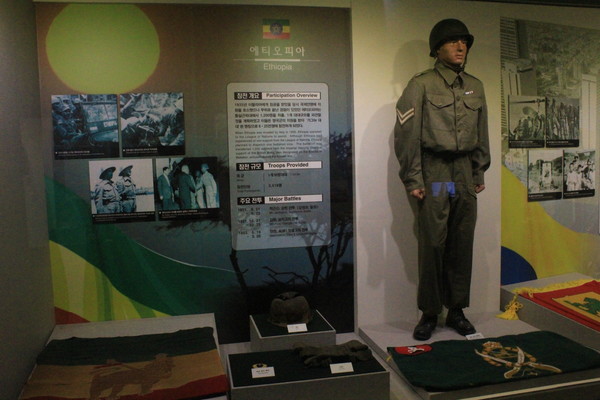
Cherishing the iron will
The Korean War is widely recognized as a tragedy that occurred within the same ethnic group, with many failing to acknowledge the significant contributions of the United Nations Command (UNC). Assembled with the dedication of 22 countries around the globe, UNC was the world’s first attempt at collective security under the United Nations system[2]. They not only participated in operations to restore peace within the peninsula, but also assisted in reconstructing infrastructure and providing civil medical support. The multinational military force, despite its commitment, is rarely spotlighted as a prominent figure in the war. My first destination in Dongducheon was the Freedom Protection Peace Museum, one of the few venues in Korea that honor the invaluable traces of the UNC.
After taking a 30-minute walk from Soyosan Station, I confronted a colossal building with thickly forested hills standing around it in the background. Flags of the nations that had participated in the UNC were hanging in front of the entrance, indicating the purpose of the museum. War materials that were used in real battlefronts, from rusty tanks to towering artillery, were placed here and there around the museum, surrounded by green fields to add a sense of silence. Upon opening the gates, colorful traces of the Korean War were placed all around the three-story building. Black-and-white photographs of the war, military uniforms of every nation in the UNC, and miscellaneous materials from the battlefront were displayed to provide detailed accounts of the brutal incident. The most surprising feature was chambers providing virtual reality experiences and rare footages of the UNC, an interactive program where visitors can better sympathize with the intensity of the Korean War. Amplified by a sense of antiquity pervading the edifice, the Freedom Protection Peace Museum was valuable enough in spotting the traces of warfare.
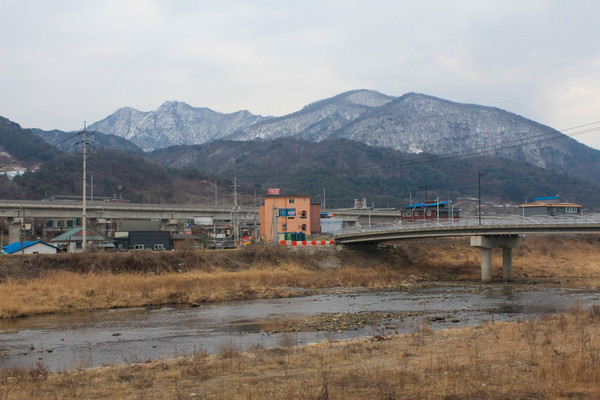
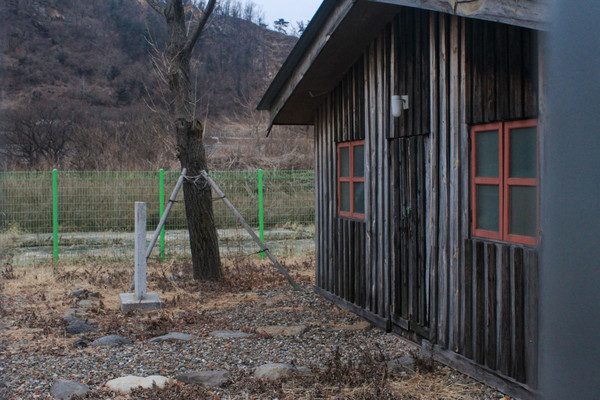
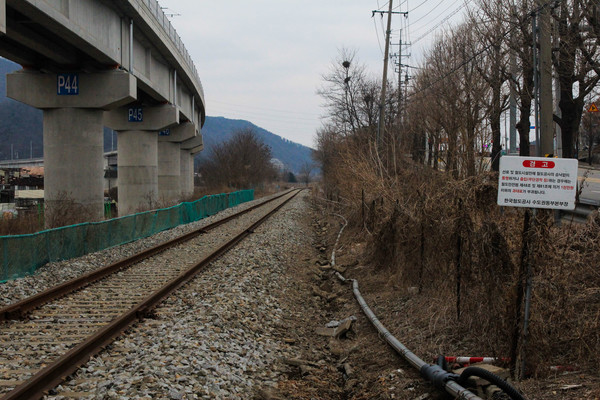
Experiencing the silent tragedy
The deep wounds of ethnic division still lie deep in our hearts, despite the 75 years that have surpassed. One iconic symbol is the Imjin River, which was used as a reference point when setting the Military Demarcation Line (MDL)[3]. The fact that its currents flow across both North and South Korea fortifies the tragedy the river conveys. Although the river does not flow through the city, Sincheon, one of the main branches of Imjin River, functions as a core watercourse for Dongducheon. In order to follow the trails of ethnic tragedy, I took my steps along the stream.
Sincheon possessed something beyond mere tranquility. Excluding the little villages and bridges sparsely spotted along the watercourse, only the echoes of trickling water and birds chirping amidst the air filled in the vast landscape. The stretch of clear water prompted my curiosity about where the stream would lead to, perhaps somewhere beyond the boundaries of South Korea.
A structure mismatching with the shore’s landscape caught my attention. A shabby cabin with stains of black decorated on its walls, the Norwegian Mobile Army Surgical Hospital (NORMASH) was firmly rooted on the secluded grounds of Dongducheon. NORMASH was a temporary hospital built in 1951, during the most intense periods of the Korean War, and operated for three years until the official declaration of ceasefire[4]. A symbol of both international cooperation and humanitarian endeavors of the war, the building was preserved in its original state for an efficacious commemoration. The serene air blended with the significance of NORMASH to create a touching atmosphere, allowing a space for sincere appreciation to all those who were part of the tragic memories of the Korean War.


Treasuring the blaze of glory
Located merely 20 km under the MDL, the development of Dongducheon was inevitably associated with U.S. military camps around the city. Six U.S. Army camps occupied the area after the Korean War, and the small village developed to an extent where it was promoted to an official city in 1981[5]. Downtown areas were accordingly erected around the camps since the city mainly functioned as a military camp town both industrially and economically. Such an exceptional environment allowed Dongducheon to possess an American culture interpreted through the Korean eye. The streets of Bosan-dong best represent such cultural fusion, now renamed as Camp Bosan to preserve the astonishing liveliness with only Camp Casey currently stationed near the area.
Shops and restaurants decorated with eccentric English signs greeted me upon arrival, clearly exhibiting the exoticism of the town. Windows of clothing stores displaying extra-large T-shirts, menus of restaurants displaying hamburgers and kebabs with antique lettering, and switched-off neon signs of American clubs were blended altogether to indicate the “Americanness” the venue possessed. Rather than polishing the obsolete structures with more than 50 years of time, Camp Bosan seemed to present American culture in a raw manner by retaining its original figures. Only the colorful graffiti art that decorated walls of each store indicated some sort of renewal the location went through. Without the stop signs with Korean letters, both the time period and space would be difficult to distinguish—the view of foreign pedestrians casually entering and leaving these shops made it hardly believable that this was modern-day Korea.
After the relocation of major U.S. troops to Pyeongtaek in 2018, efforts were made to prevent the decline of Dongducheon, such as designation as a Special Tourist Zone[6]. However, there were no bustling crowds in the streets and stores of Camp Bosan, indicating the economic damage it received after the abrupt decrease in the American population. What I spotted instead was a sense of dreariness, as many shops were firmly closed with unclear reopening dates. Camp Bosan, its blaze of glory long gone, was a fresh but deep wound from the byproducts of war.
* * *
As decades have passed after the Korean War, our society has experienced a dramatic transformation in both its cultural and social aspects. The fact that the tragedy is hardly remaining in our heart is what makes Dongducheon more valuable—from records commemorating the battlefront to sceneries displaying the impact of the war at Camp Bosan, the city is a reminder of the sorrowful moments inside the cruelty.
[1] Kyunghyang Daily
[2] United Nations Command
[3] Military Demarcation Line: Land border or demarcation line between South and North Korea
[4] KBS
[5] Dongducheon City
[6] Special Tourist Zone: Areas designated by the Tourism Promotion Act, where deregulation and financial support are provided to facilitate the visit of foreign tourists

